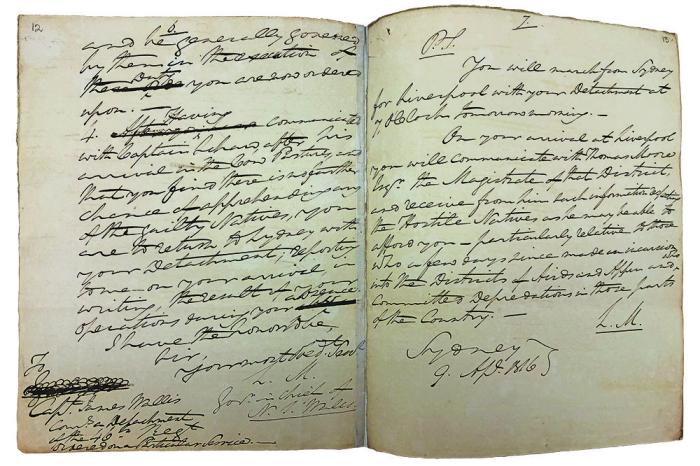Appin Massacre 1816 |

Wednesday 17th April 1816 - The official death toll of 14 Aboriginal peoples is likely to have been much greater.
Governor Lachlan Macquarie effectively declared war on the Aboriginal peoples of New South Wales. He authorised a campaign of "terror" against those "hostile natives" who didn't submit to colonial rule: permitting them to be killed, and their bodies hung up in the trees as grisly warnings, or taken hostages as "prisoners of war".
Military campaigns sought to punish Aboriginal people for their resistance, but as British subjects they were also meant to be protected under British law.
The Appin Massacre of Aboriginal men, women and children on 17th April 1816 was the result of Macquarie's orders for members of the 46th Regiment to lead punitive expeditions in the Liverpool district, Hawkesbury, Nepean and Grose Valleys.
Major General Lachlan Macquarie was the colony's fifth governor. An experienced army officer, his approach to dealing with Aboriginal resistance was one of leading a wartime campaign. Macquarie sought to secure the Cumberland Plain to expand the colony westward beyond the mountains.
In early April 1816, he instructed Captain James Wallis, Lieutenant Charles Dawe, and Captain W.B.G. Schaw to individually lead three military detachments across the colony: to clear the land of Aboriginal people and to set examples, through violence and hostage-taking, for the ones openly opposing colonial authority.
Captain James Wallis led his detachment towards Appin, in south-west Sydney. In the early hours on 17th April 1816, the cry of an Aboriginal child broke the silence of the night and alerted Wallis to the whereabouts of a group of sleeping men, women and children near the Cataract River.
Contravening Macquarie's clear instructions to seek their surrender as "Prisoners of War" and to "save the lives of the Native Women and Children", Wallis engaged in a night raid, killing indiscriminately, driving people off the gorge and shooting them.
The official death toll of 14 is likely to have been much greater.
Once Captain James Wallis reported what had happened at Appin to Governor Lachlan Macquarie, Macquarie in turn reported to his superior in England, Henry Bathurst, 3rd Earl Bathurst. Although Captain Wallis didn't mention offering a surrender, nor meeting resistance from the Aboriginal group, Macquarie informed Bathurst that several were "unavoidably killed and wounded" because they had not "surrendered themselves on being called on to do so", and that Wallis had to respond to "some resistance" from the group.
There are further discrepancies in the official record highlighted in another contemporaneous account, William Byrne's reminiscence recorded in 1903. Byrne recalls three hung, where Captain Wallis reported two.
The Appin Massacre of 17th April 1816 is said to mark a turning point in how the law dealt with Aboriginal peoples.
This official Proclamation, meant to be shared widely in the colony, was a continuation of the de facto declaration of war by Governor Lachlan Macquarie and the Crown against the Aboriginal people of New South Wales. The Proclamation sought to establish regulations to control Aboriginal people including restricting movements and prescribing what they could carry on their person. It forbade large gatherings and discussed issuing passports - hallmarks of later protectionist policies.
❊ More Information ❊
→
australian.museum
➼ australian.museum
Update Page








